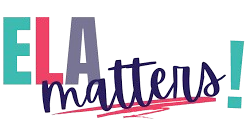If you’re a fan of the New York Times crossword puzzle, you’ve likely encountered the infamous Vault Opener Puzzle. This unique challenge has puzzled even seasoned solvers, leaving many wondering how to crack its code. With clues that twist and turn and answers that require a keen eye for detail, this puzzle is not just about filling in boxes; it’s an exhilarating journey into wordplay and lateral thinking. Whether you’re a novice or an experienced solver looking to sharpen your skills, understanding the strategies behind this enigmatic challenge can transform your approach. Let’s dive into the world of vaults and keys as we unravel tips and tricks to conquer the Vault Opener NYT Crossword!
Tips for Decoding Clues and Solving the Puzzle
Deciphering clues in the vault opener NYT crossword can feel like an intricate dance. Start by paying attention to wordplay. Puns and double meanings are often hidden gems.
Look for indicators that suggest specific answers. Words like “perhaps” or “maybe” hint at flexibility in responses, while terms such as “abbreviation” signal a need for short forms.
Don’t overlook cross-references; they provide context. If a clue refers to another answer, think about how they connect.
Consider common themes too. Many puzzles feature recurring motifs or categories, from pop culture to history. Familiarity with these can give you an edge.
Trust your instincts when choosing answers. Sometimes going with your gut feeling leads to unexpected breakthroughs in solving tricky sections of the puzzle.
Using Crossword-solving Tools and Resources
Crossword-solving tools can elevate your game, especially when tackling the vault opener NYT crossword. These resources range from mobile apps to online databases that offer a wealth of knowledge.
Consider using dedicated crossword apps like Crossword Solver or New York Times’ own app. They typically feature helpful hints and even reveal answers if you get stuck.
Online forums also provide valuable insights. Websites like Reddit have active communities where enthusiasts share tips and strategies for specific puzzles, including the vault opener challenges.
Don’t overlook dictionaries or thesauri either. A quick search for synonyms or definitions can lead you down the right path when deciphering tricky clues.
Leveraging social media platforms allows interaction with fellow solvers in real-time. Sharing experiences enriches your understanding of various puzzle styles while keeping the journey enjoyable.
Practice Makes Perfect: Ways to Improve Your Skills
Improving your skills in the vault opener NYT crossword requires consistent practice. The more you engage with puzzles, the better you’ll become at recognizing patterns and familiar clues.
One effective method is to tackle different types of crosswords. Try daily puzzles, themed editions, or even online versions. Each style offers unique challenges that can sharpen your problem-solving abilities.
Join a crossword club or participate in online forums. Sharing insights with fellow enthusiasts can expose you to new strategies and solutions.
Set aside dedicated time each week for practice sessions. Treat it like a workout for your brain; consistency will yield growth over time.
Don’t shy away from mistakes—they’re valuable learning opportunities. Reflect on what tripped you up and use that knowledge to enhance your future attempts.
Common Pitfalls and How to Avoid Them
One common pitfall in the vault opener NYT crossword is overthinking clues. Often, the simplest answer is right under your nose. Don’t let complex phrasing throw you off track.
Another issue arises from fixating on one area of the grid. This can limit your perspective and make it harder to see connections elsewhere. Move around; fill in what you know first.
Many solvers struggle with themed puzzles, missing key hints embedded within the theme itself. Pay close attention to any unusual words or phrases—they often serve as vital clues.
Don’t underestimate letter patterns. The more puzzles you tackle, the better you’ll recognize common combinations that frequently pop up. Trust your instincts when filling them in; they’re usually spot-on!
Expert Strategies from NYT Crossword Constructors
NYT crossword constructors have a wealth of strategies that can enhance your puzzle-solving experience. One key tip is to familiarize yourself with common themes and patterns. Many constructors favor specific wordplay, so recognizing these tricks will give you an edge.
Another effective strategy involves focusing on the grid layout. Notice how certain answers intersect, providing clues for other words. This interconnectedness can sometimes lead to breakthroughs in tricky sections.
Don’t overlook the importance of vocabulary. Constructors often use creative synonyms or lesser-known phrases, which adds an extra layer of challenge. Expanding your lexicon can be incredibly beneficial.
Pay close attention to clue wording. Subtle differences in phrasing can indicate whether the answer is straightforward or requires lateral thinking. Adapting your approach based on these nuances sets successful solvers apart from novices.
Conclusion: Unlocking Success in the Vault Opener Puzzle
Mastering the vault opener puzzle in NYT crosswords can feel daunting at first, but with practice and the right strategies, you’ll find yourself unlocking these challenging clues with ease. It’s essential to embrace a mindset of curiosity and patience as you navigate through each layer of complexity.
Utilizing resources like online crossword solvers or dedicated forums can significantly enhance your understanding. Combine that knowledge with expert tips from seasoned constructors to elevate your skills further. Don’t shy away from practicing regularly; this is key to improving your speed and accuracy.
Remember that every puzzler faces challenges along the way. Recognizing common pitfalls will empower you to sidestep frustration as you engage more deeply with this fascinating aspect of crossword solving. Success in the vault opener puzzle is not just about finding answers—it’s about enjoying the journey of discovery within each clue. Keep honing your craft, and soon enough, you’ll be cracking those codes like a pro!

